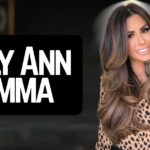Are you looking to expand your artistic horizons with some fresh, fun drawing subjects? Mushrooms offer the perfect blend of simplicity and whimsy for artists of all skill levels. From cute character designs to botanical studies, these fascinating fungi provide endless creative possibilities.
This comprehensive guide will walk you through 30 easy mushroom drawing ideas that are perfect for beginners and experienced artists alike. Grab your sketchbook and let’s explore the magical world of mushroom art!
Why Mushrooms Make Perfect Drawing Subjects
Before diving into our mushroom drawing ideas, let’s understand why fungi make such appealing subjects:
- Simple basic shapes – most mushrooms can be broken down into circles, ovals, and lines
- Endless variety – with over 10,000 known species, inspiration is unlimited
- Great for practicing texture – from smooth caps to rough stems
- Perfect for both realistic and whimsical styles
- Appeal across age groups – everyone from children to professional artists can enjoy drawing mushrooms
“Mushrooms are nature’s magical sculptures – simple yet infinitely diverse, making them perfect subjects for artists at any level.” – Professional illustrator Emma Woodland
Now let’s explore our 30 easy mushroom drawing ideas, complete with tips and inspiration for each concept!
Mushroom Kitty
Combining the cuteness of cats with the whimsy of mushrooms creates an irresistible drawing subject. The mushroom kitty concept offers endless creative possibilities for artists looking for playful subjects.
To create your own mushroom kitty drawing:
- Start with basic shapes – an oval for the cat’s body and a dome for the mushroom cap
- Add triangular ears and a tail to your cat outline
- Draw the mushroom cap on or around the cat (as a hat, house, or companion)
- Add facial features – large eyes work well for a cute effect
- Include details like spots on the mushroom cap and whiskers on the kitty
- Finish with any additional elements like a forest background or accessories
This concept works beautifully in both realistic and cartoon styles. For beginners, stick with simple shapes and bold outlines. More advanced artists might experiment with different mushroom varieties or cat breeds.
Pro tip: To increase the whimsical factor, try making the mushroom cap much larger than would be realistic compared to the cat.
Two Mushroom Buddies
Create a heartwarming scene by drawing two anthropomorphized mushrooms interacting with each other. This concept taps into our natural tendency to see faces and personalities in objects.
For your mushroom buddies drawing:
- Give each mushroom a distinct personality through size, shape, and facial expressions
- Show them engaging in an activity together (talking, hugging, sharing an umbrella)
- Use different mushroom species for visual contrast
- Add simple stick arms and legs for expressive poses
- Consider including small details like hats, bags, or other accessories
This concept works wonderfully for greeting cards, children’s illustrations, or just for fun. The key is creating a sense of relationship between your two fungal friends.
| Mushroom Buddy Ideas | Visual Features | Personality Traits |
| Elder Mushroom | Tall, slightly drooping cap | Wise, patient, nurturing |
| Baby Mushroom | Small, round cap | Curious, energetic, innocent |
| Fancy Mushroom | Ruffled or decorated cap | Elegant, sophisticated, proud |
| Grumpy Mushroom | Furrowed cap, downturned mouth | Cranky, set in ways, secretly kind |
| Adventurous Mushroom | Cap tilted to one side | Bold, risk-taking, enthusiastic |
Mushroom with Leaves
Combining mushrooms with botanical elements creates drawings with natural harmony and balance. The contrast between the vertical growth of mushrooms and the horizontal spread of leaves creates visually interesting compositions.
When drawing mushrooms with leaves:
- Start with your mushroom structure
- Add leaves around or behind the mushroom
- Consider seasonal elements – fall leaves on the ground, spring leaves on branches
- Practice different leaf shapes – maple, oak, fern fronds
- Experiment with overlap to create depth
This approach works especially well for nature journals, botanical illustrations, or seasonal artwork. The combination of different organic elements helps develop your observational drawing skills.
Fun fact: In nature, certain mushroom species have symbiotic relationships with specific plants and trees. For example, chanterelles often grow near oak and beech trees, while morels have associations with elm trees.
Duo of Fly Amanitas
The iconic red-capped Amanita muscaria (fly amanita) with its distinctive white spots makes for instantly recognizable and visually striking artwork. Drawing two together creates an engaging composition with natural visual interest.
Tips for drawing fly amanitas:
- Create contrast by varying the size, angle, and maturity of each mushroom
- Pay attention to the classic elements: bright red caps, white spots, white stems, and skirt-like rings
- Add subtle details like grass or pine needles around the base
- Consider the viewing angle – from above, side view, or from a bug’s perspective
- Use the spotted pattern to practice your stippling technique
These mushrooms are perfect for practicing both color and pattern. Their bold appearance makes them forgiving subjects for beginners while offering enough complexity for advanced studies.
“The fly amanita, with its fairytale appearance, bridges the gap between realistic botanical studies and fantasy art. Few subjects offer such versatility.” – Botanical artist Thomas Reed
Simple Mushroom
Sometimes the most basic approach yields the most satisfying results. A simple mushroom drawing focuses on capturing the essential elements with clean, confident lines.
For the perfect simple mushroom:
- Draw a smooth curve for the cap
- Add a straight or slightly tapered line for the stem
- Include minimal details – perhaps a line suggesting the gill edge under the cap
- Focus on proportion – typically the cap and stem have roughly equal visual weight
- Keep your lines clean and deliberate
This stripped-down approach is perfect for:
- Building confidence in new artists
- Quick sketching practice
- Creating repeatable elements for patterns
- Learning the basic structure before attempting more complex mushrooms
Practice exercise: Try drawing the same simple mushroom from multiple angles – top view, side view, and three-quarter view – to understand its three-dimensional form.
Bumpy-Capped Mushroom
Adding texture to your mushroom drawings creates visual interest and helps develop important artistic skills. Bumpy-capped mushrooms offer excellent texture practice while remaining straightforward to draw.
When creating bumpy-capped mushrooms:
- Start with your basic mushroom shape
- Add small bumps, warts, or ridges across the cap surface
- Vary the size and distribution of the textural elements
- Consider adding subtle shading to enhance the three-dimensional quality
- Look at mushroom varieties like shaggy mane or old man of the woods for inspiration
This approach teaches valuable skills in observation and texture rendering. The irregular surface creates natural opportunities for practicing light and shadow effects.
Artist tip: Use the side of your pencil lightly for overall shading, then add darker accents with the point for the bumps or ridges.
Classic Mushroom
The archetypal mushroom shape we all recognize creates a timeless drawing subject. This balanced, symmetrical form serves as the foundation for countless variations.
Key elements of the classic mushroom include:
- A smooth, domed cap
- Straight, cylindrical stem
- Balanced proportions
- Optional gills under the cap
- Clean, definitive outline
This fundamental mushroom form appears in everything from emoji designs to scientific illustrations. Mastering this basic structure provides a solid foundation for all your fungal artwork.
| Classic Mushroom Elements | Drawing Tips |
| Cap | Draw as a smooth arc or half-circle, wider than the stem |
| Stem | Create with parallel lines or a slight taper toward the base |
| Gills | Suggest with closely spaced lines radiating from stem to cap edge |
| Base | Add a slight flare or bulb at the bottom for stability |
| Ring/Annulus | Optional band around upper stem where cap was connected |
Mushroom in a Wizard Hat
Combining mushrooms with fantasy elements creates charming illustrations that bridge the natural and magical worlds. The mushroom in a wizard hat concept plays with scale, personification, and whimsy.
To create this magical mashup:
- Either draw a mushroom wearing a pointed wizard hat
- Or transform the mushroom cap itself into a wizard hat shape
- Add magical elements like stars, sparkles, or glowing effects
- Consider including a wand, spellbook, or potion bottle
- Play with color contrasts between the natural mushroom and the vibrant wizard accessories
This concept works wonderfully for:
- Children’s book illustrations
- Fantasy-themed greeting cards
- Game character designs
- Whimsical home decor
Creative variation: Try reversing the concept by drawing a wizard with a mushroom-shaped hat!
Triple Mushroom
Creating a composition with three different mushrooms provides opportunities to practice variety, grouping, and arrangement. The classic “rule of three” creates visually balanced and appealing artwork.
For your triple mushroom drawing:
- Choose three different mushroom types or growth stages
- Arrange them in a visually pleasing grouping – perhaps a triangular composition
- Vary heights, cap shapes, and textures
- Create overlap between elements for a sense of depth
- Add ground elements like grass, dirt, or moss to anchor the composition
This approach helps develop compositional skills while expanding your mushroom drawing repertoire. The odd number creates natural visual interest and flow.
Botanical note: In nature, mushrooms often grow in groups or clusters, making this a biologically accurate approach to fungi illustration.
Laid-Back Mushroom
Personifying mushrooms by giving them relaxed, human-like postures creates instantly engaging character drawings. The laid-back mushroom concept invites viewers to connect emotionally with your artwork.
To create your chilled-out fungus:
- Draw your mushroom with a slight lean or tilt
- Add simple stick arms in a relaxed pose – perhaps behind the “head” or crossed
- Include leg-like extensions at the base in a comfortable position
- Give the cap a slight droop for extra relaxation vibes
- Add facial features that convey contentment – half-closed eyes, slight smile
- Consider adding accessories like sunglasses or a tiny drink
This anthropomorphized approach bridges botanical drawing and character design. It’s perfect for developing storytelling elements in your artwork.
“The best character designs start with something familiar – like a mushroom shape – then add just enough human qualities to create emotional connection.” – Animation designer Julia Chen
Honey Mushrooms
Honey mushrooms (Armillaria mellea) grow in attractive clusters and offer a perfect subject for practicing grouped organic forms. Their honey-gold color and clustered growth habit create visually dynamic compositions.
When drawing honey mushrooms:
- Start with a central cluster of caps in varying sizes
- Show caps at different angles and growth stages
- Connect them with slender, tapering stems
- Include the characteristic small ring around each stem
- Add subtle details like tiny scales on the caps
- Consider indicating the wood substrate they typically grow on
This subject combines botanical accuracy with artistic arrangement. The natural clustering creates built-in composition guidelines.
Fascinating fact: Honey mushrooms are connected to some of the largest living organisms on Earth. In Oregon, a single honey mushroom organism spans 2.4 miles across, making it the largest known organism by area!
Spotted Mushroom
Patterns and spots add visual interest to any drawing subject. Spotted mushrooms provide excellent practice for pattern creation while maintaining a simple overall structure.
Tips for drawing spotted mushrooms:
- Begin with your basic mushroom shape
- Decide on a spot pattern – regular or irregular
- Start with larger spots, then add smaller ones
- Vary the density of spots across the cap for natural appearance
- Consider the three-dimensional form when placing spots
- Add subtle shading around spots to enhance dimension
This technique develops pattern-making skills while creating visually striking artwork. The high contrast between mushroom cap and spots creates bold, graphic images.
Design tip: For a more organic feel, make your spots irregular in shape and vary their spacing. For a more decorative or stylized look, create regular, evenly spaced spots.
Smiley Mushroom
Adding a cheerful face to a mushroom creates an instantly appealing character. The smiley mushroom concept is perfect for beginners and creates artwork with universal appeal.
To create your happy fungus friend:
- Draw a basic mushroom shape
- Add large, expressive eyes – circles with smaller circles inside work well
- Create a wide, happy smile curve
- Consider adding rosy cheeks for extra cheerfulness
- Include simple arms extending from the stem
- Add small details like eyebrows or freckles for personality
This approach works wonderfully for:
- Greeting cards
- Children’s room decor
- Social media stickers or emojis
- Beginning character designers
Psychological note: Studies show that viewing happy faces, even simplified cartoon ones, can trigger positive emotional responses in viewers.
Wavy Caps
Mushrooms with undulating, wavy cap edges create organic movement in your drawings. This variation on the basic mushroom form adds visual interest while remaining fairly simple to execute.
When drawing wavy-capped mushrooms:
- Start with your basic mushroom structure
- Instead of a smooth cap edge, create gentle waves or ripples
- Keep the waves organic and flowing, not geometric
- Consider how the waves affect the gill pattern underneath
- Add subtle shading in the dips of the waves for dimensionality
This approach helps develop skills in creating organic, flowing lines while maintaining overall form coherence. Many real mushroom species exhibit these beautiful wavy margins.
Species inspiration: Look at mushrooms like the chanterelle, oyster mushroom, or many Lactarius species for natural examples of wavy-edged caps.
Cat on a Mushroom
Combining a feline figure with an oversized mushroom creates a whimsical scene that appeals to animal lovers and fantasy art enthusiasts alike. This concept plays with scale and creates charming narrative possibilities.
For your cat on mushroom drawing:
- Draw a large mushroom as the base structure
- Add a properly scaled cat sitting or lying on top
- Pay attention to the cat’s pose – how would it balance on a curved surface?
- Consider the cat’s personality through its position and expression
- Add details like mushroom spots or the cat’s fur texture
- Include ground elements to establish scale and setting
This mashup of subjects helps practice drawing different organic forms in relation to each other. The size contrast creates built-in visual interest.
Composition tip: Position the cat slightly off-center on the mushroom cap for a more dynamic arrangement than perfect centering would provide.
Fallen Mushroom
Drawing a mushroom from an unusual angle or position challenges observation skills and creates unique artwork. A fallen or tipped-over mushroom provides fascinating new perspectives on this familiar form.
When creating a fallen mushroom drawing:
- Show the mushroom on its side
- Reveal the gill structure underneath the cap
- Consider adding environmental elements that might have caused the fall
- Include subtleties like dirt on the exposed stem or slight cap damage
- Think about shadows and how they’d fall differently in this position
This approach helps develop observational drawing skills and understanding of three-dimensional forms. The unusual perspective creates visually interesting compositions.
“The most interesting natural subjects are often those caught in transition or unusual states – like a fallen mushroom revealing structures normally hidden from view.” – Nature artist Maria Gonzalez
Chanterelles
The distinctive funnel shape and golden color of chanterelle mushrooms make them both recognizable and visually compelling drawing subjects. Their unique form offers a departure from the typical mushroom shape.
Tips for drawing chanterelles:
- Start with an inverted cone or trumpet shape
- Create wavy, irregular edges around the top rim
- Add the characteristic ridges (not true gills) running down the outer surface
- Keep the stem thick and tapering downward
- Consider grouping several together in different sizes
- Add subtle forest floor elements like pine needles or leaf litter
This mushroom variety helps expand your drawing repertoire beyond the classic mushroom shape while remaining recognizable and relatively simple.
Culinary note: Chanterelles are highly prized edible mushrooms, known for their golden color and fruity aroma, sometimes compared to apricots.
Enoki Mushroom
The delicate, clustered growth pattern of enoki mushrooms provides excellent practice for drawing grouped organic elements. Their long, thin stems and small caps create elegant, visually interesting compositions.
When drawing enoki mushrooms:
- Begin with a cluster of thin, parallel stems
- Add tiny button caps at the top of each stem
- Show slight variations in height and angle
- Create overlap between stems for depth
- Consider including the base substrate they’re growing from
- Use very light pressure for these delicate structures
This subject helps develop precision in line work and practice in creating grouped similar elements with subtle variations.
| Enoki Feature | Drawing Technique |
| Thin stems | Use light, controlled lines with minimal pressure |
| Tiny caps | Simple circles or slight ovals at stem tops |
| Clustering | Start central stems, then add outer ones |
| Base connection | Show stems converging at bottom |
| Overall form | Maintain vertical orientation with slight natural curves |
Curvy Mushrooms
Exaggerating the natural curves of mushroom stems creates playful, dynamic drawings. Curvy mushrooms bring movement and personality to your fungi illustrations.
To create curvy mushroom drawings:
- Start with basic mushroom shapes
- Instead of straight stems, create S-curves or spirals
- Adjust the cap angles to relate naturally to the curved stems
- Consider how gravity might affect the overall form
- Add details that enhance the sense of movement
This approach helps develop skills in creating dynamic curves while maintaining believable organic forms. The exaggerated shapes bring energy and playfulness to your artwork.
Design principle: Curves create visual movement and guide the viewer’s eye through your composition.
Mushroom Girl
Creating a humanoid character with mushroom elements combines character design with botanical inspiration. The mushroom girl concept offers endless creative possibilities for personifying fungi in appealing ways.
For your mushroom girl drawing:
- Use a mushroom cap as a hat or hair
- Create a simple human or doll-like body
- Add facial features that complement the mushroom theme
- Consider clothing inspired by mushroom textures or colors
- Include accessories like a basket of smaller mushrooms or forest elements
- Play with scale – will she be human-sized or tiny?
This character design exercise bridges natural observation and imaginative creation. The combination of human and fungal elements creates inherently interesting designs.
Design variations:
- Fairy-like with transparent wings
- Woodland sprite with leafy accents
- Modern character with contemporary clothing
- Ancient forest guardian with moss and natural elements
Elegant Mushroom with Leaves
Creating a composition that combines a tall, graceful mushroom with delicate leaves creates a balanced botanical illustration. This approach focuses on the aesthetics of natural forms and their harmonious arrangement.
When drawing an elegant mushroom with leaves:
- Choose a tall, slender mushroom variety as your central element
- Surround it with complementary leaf shapes – ferns work particularly well
- Create intentional overlaps between elements
- Consider the flow and direction of each component
- Add subtle details like dew drops or textural elements
- Maintain proportion relationships between all elements
This composition helps develop skills in combining different natural elements cohesively. The contrast between vertical mushroom growth and horizontal leaf spread creates natural visual interest.
Artistic principle: Contrasting forms (vertical/horizontal, round/pointed, solid/delicate) create dynamic, balanced compositions.
Mushroom on a Log
Depicting mushrooms in their natural habitat creates environmentally contextualized artwork. The mushroom on a log concept combines two natural elements with contrasting textures and forms.
Tips for drawing mushrooms on logs:
- Start with a horizontal log form with bark texture
- Add mushrooms growing from the sides or top
- Vary the size and development stage of the mushrooms
- Include details like bark patterns, moss, or wood grain
- Consider showing some mushrooms from underneath where they connect to the log
- Add subtle background elements for habitat context
This approach helps develop skills in texture rendering and natural composition. The combination of different organic textures provides excellent drawing practice.
Scientific note: Many mushroom species are decomposers that break down dead wood, returning nutrients to the forest ecosystem. Your drawing represents an important ecological process!
Princess Mushroom
Adding royal or fairy tale elements to a mushroom creates charming fantasy illustrations. The princess mushroom concept blends natural forms with imaginative embellishments.
To create your royal fungus:
- Start with an elegant mushroom shape
- Add a small crown or tiara on the cap
- Consider a delicate face with regal expression
- Embellish with jewel-like spots or patterns
- Include royal accessories like a scepter, cape, or fancy skirt
- Add sparkle effects or a glowing aura for magical emphasis
This concept bridges botanical drawing and fantasy illustration. The anthropomorphized approach creates instant narrative possibilities.
Storytelling prompt: What kingdom does your princess mushroom rule? What challenges might a tiny mushroom monarch face?
Mushroom Book
Combining mushrooms with other objects creates unexpected and engaging compositions. The mushroom book concept juxtaposes natural and human-made elements in surprising ways.
For your mushroom book drawing:
- Draw an open book as the base element
- Show mushrooms growing directly from the pages
- Consider having the mushrooms interact with printed text or illustrations
- Add magical elements like glowing spores or mysterious mist
- Think about the story this image tells – is it a spell book? A field guide? A forgotten tome?
- Include small details like bookmarks or worn page edges
This surreal combination helps develop creativity in combining disparate elements cohesively. The contrast between structured book form and organic mushroom growth creates inherent visual interest.
“The most compelling conceptual art often combines elements we don’t expect to see together, creating new associations and narratives.” – Art director Sophia Brown
Mushroom Potion
The association between mushrooms and magic makes them perfect for mystical potion illustrations. This concept connects fungi to their historical uses in medicine, ritual, and folklore.
When creating mushroom potion artwork:
- Draw a glass bottle or flask as your container
- Show colored liquid inside with mushroom elements
- Add details like labels, corks, or wax seals
- Include additional ingredients like herbs or crystals
- Consider magical effects like glowing liquid or floating bubbles
- Add small mushrooms as decoration around the bottle
This concept combines still life drawing skills with fantasy elements. The transparent container provides practice with suggesting glass and liquid.
Historical note: Mushrooms have been used in traditional medicine across many cultures for thousands of years, with documented medicinal use dating back to 5000 BCE.
Sleepy Mushroom
Personifying mushrooms with human emotions creates instantly relatable artwork. The sleepy mushroom concept brings warmth and comfort to your fungi illustrations.
To draw your drowsy fungus:
- Create a slightly drooping mushroom cap
- Add heavy-lidded eyes or completely closed eyes
- Include details like a nightcap, pillow, or tiny blanket
- Consider a yawning expression or thought bubble with “Z”s
- Position the stem in a relaxed, slightly slouched posture
- Add a cozy setting element like moss bedding or a leaf blanket
This anthropomorphized approach helps develop character design skills while maintaining the basic mushroom form. The emotional content creates instant viewer connection.
Character design tip: Small adjustments to basic shapes – like a slightly drooping cap – can convey strong emotional states without requiring complex drawing skills.
Mushroom House
The distinctive shape of mushrooms makes them perfect imaginary dwellings. The mushroom house concept taps into fairy tale traditions while providing creative architectural drawing practice.
For your fungi dwelling:
- Use a large mushroom shape as the basic structure
- Add windows and a door scaled for tiny inhabitants
- Include architectural details like chimneys, stairs, or fences
- Consider landscaping elements around the base
- Add character with details like curtains, window boxes, or a mailbox
- Think about who might live here and add appropriate touches
This concept helps develop skills in adapting natural forms for imaginary purposes. The combination of organic mushroom shapes with architectural elements creates charming illustrations.
Creative exercise: Try drawing the same mushroom house in different seasons – how would it look in winter snow versus summer sunshine?
Simple Happy Mushroom
Sometimes the most basic approach creates the most appealing artwork. A simple happy mushroom focuses on clean lines and clear expression for maximum impact.
To create your cheerful fungi:
- Draw a clean, basic mushroom shape
- Add simple dot eyes and a curved smile line
- Keep details minimal – perhaps just a spot or two on the cap
- Focus on proportion and balanced composition
- Use confident, smooth lines
This minimalist approach is perfect for:
- Beginners building confidence
- Quick sketching practice
- Creating repeatable elements for patterns or borders
- Emoji or sticker designs
Artistic principle: Simplicity often creates the strongest emotional impact and most memorable images.
Small Mushroom
Playing with perspective can transform ordinary subjects into fascinating scenes. Drawing a tiny mushroom from a bug’s-eye view creates unusual and engaging artwork.
When creating your small mushroom perspective:
- Draw the mushroom as the dominant element in the composition
- Show it from a low angle, looking upward
- Include ground-level details like individual grass blades or soil particles
- Consider adding a small insect for scale reference
- Use size relationships to create a sense of grandeur
- Think about lighting – perhaps backlighting for a dramatic effect
This approach helps develop skills in perspective and viewpoint. The unusual angle creates inherently interesting compositions.
Photographic tip: Nature photographers often use this low-angle technique to make small subjects appear monumental.
Cute Watercolor Mushrooms
If you’re working with color, watercolor techniques create particularly beautiful mushroom illustrations. The soft, flowing nature of watercolor complements the organic mushroom forms.
Tips for watercolor mushroom drawings:
- Start with a light pencil sketch of your mushroom forms
- Apply pale washes for the base colors
- Let colors blend and bleed together at edges
- Add darker details once the base is dry
- Use dry brush technique for textural elements
- Consider leaving some white areas for highlights
This approach helps develop skills in controlling water media while embracing its fluid properties. The soft, dreamy quality of watercolor enhances the magical feel of mushroom subjects.
Color inspiration:
- Soft reds and whites for fly amanitas
- Golden yellows for chanterelles
- Brown tones for cremini or portobello
- Purples and blues for fantasy varieties
Wrap Up
These 30 easy mushroom drawing ideas offer something for everyone, from absolute beginners to experienced artists looking for fresh inspiration. Mushrooms provide endless creative possibilities while remaining approachable for successful drawing experiences.
Key takeaways from our mushroom drawing journey:
- Start simple – master basic mushroom forms before adding complexity
- Observe nature – real mushrooms provide the best inspiration
- Play with perspective – try different viewpoints for interesting compositions
- Add personality – anthropomorphized mushrooms create instant emotional connection
- Combine elements – mushrooms pair beautifully with other natural or fantastical subjects
- Practice texture – mushrooms offer excellent opportunities for textural exploration
- Tell stories – even simple mushroom drawings can suggest narratives
Whether you’re creating realistic botanical studies or whimsical mushroom characters, these ideas will help you develop your skills while having fun. The fungal world awaits your artistic interpretation!
What mushroom drawing will you try first? Grab your pencils and start bringing these fantastic fungi to life on paper!










